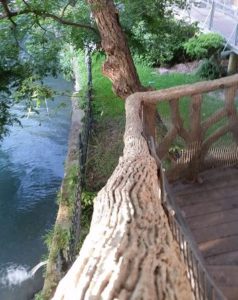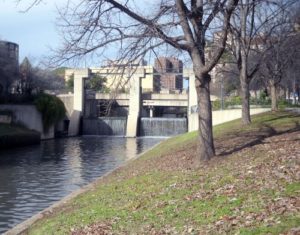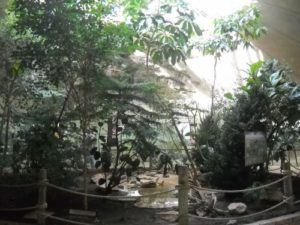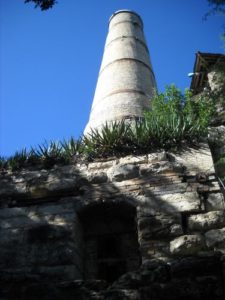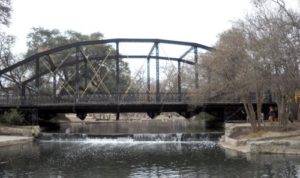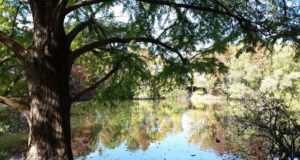On my master list of parks, I say that not all of the parks in the San Antonio area are actually owned and operated by the City of San Antonio. This is one of those other parks, which is owned and operated by Bexar County. And it’s quite a bit larger than I expected it to be. The entrance to the park is on the access road for Loop 410 so I figured I could cover it in 15 minutes. I stayed for almost 45. I was also there late in the day, so many of my pictures are slightly overexposed.
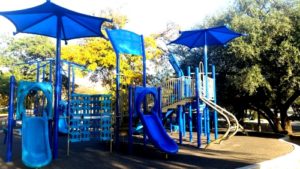
McArthur Park has several picnic pavilions and a bit of walking path, but the main feature of the park seems to be playgrounds. The park has three of those playscapes where all of the equipment is connected into one big sort of piece of park furniture and there are additional pieces of playground equipment including swings and a small monkey bar thing that looks like a flying saucer. I found that last one particularly interesting, but couldn’t take pictures of it because there were someone’s kids on it and taking pictures of other people’s children is considered to be kind of creepy. Maybe I’ll return someday and get a picture of that.
Have you played the “You are Jeff Bezos” game? The point of the game is to demonstrate just exactly how much $156 billion is. You wake up as Jeff Bezos and you decide that maybe if you spend all of his money you can get back to your own life. I’m not 100% about the things that the game designers think are priorities. For example one of the options is to revive Mythbusters. I’ve seen like two episodes of Mythbusters and have heard of a bunch more and I’m just not a fan. I’ve just never believed that the five-second rule really means that it takes five seconds for germs to attach to an item dropped on the floor. It’s more a winking “if you fix it fast enough it never happened” thing, I think. So watching two guys drop things on the floor and measure the germs on it just doesn’t seem like gripping television to me.
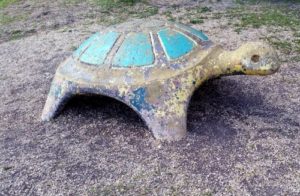
What I would like to spend a bunch of Jeff Bezos’s $156 billion on is fixing up parks. And McArthur had a bit of stuff that I’d like to fix. For example there are several pieces of concrete art that need a bunch of TLC. The paint is peeling (or has peeled) off and in several cases there are actual chunks of concrete missing. I really do wonder how much it would cost to paint and repair those poor things, if Bexar County would take a donation for that purpose, and if I could write it off of my income taxes.
Now I need an Amazon link. Does Amazon have some kind of “pick a random book” feature? I guess I’ll try to come up with my own. So, searching for “Parks” and sorting by customer reviews, the first result is Urban Trails: San Francisco: Coastal Bluffs/ The Presidio/ Hilltop Parks & Stairways by Alexandra Kenin. I guess that’ll hold me for this post, particularly since seeing the San Francisco area is years away at this point unless this blog thing really takes off or I win the lottery.

